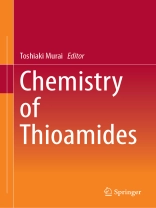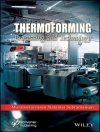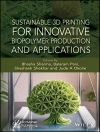This book covers whole aspects of the sulfur isologues of amides. Starting from the synthetic methods of thioamides, a range of synthetic applications to the construction of carbon–sulfur and carbon–carbon bonds, to asymmetric reactions, to formation of heterocycles are described.
Among the array of thiocarbonyl compounds, thioamides are readily handled in room temperature air. Some of their characteristic features are that the polarity of C=S bonds in thioamides is much smaller than C=O bonds in ordinary amides, that thioamides possess higher HOMO and lower LUMO when compared with those of ordinary amides, and that carbon atoms alpha to the C=S and nitrogen atoms in thioamides are more acidic than those in ordinary amides. Theoretical studies further disclose their features.
Thioamides are also used as ligands to a wide variety of metals. Their unique photophysical properties and catalytic activities are described here. Characteristic features of biologicallyrelevant thioamides, e.g., thiopeptides and related compounds, are the final focus of the book.
Inhoudsopgave
1. Thioamides : Overview.- 2. Theoretical Aspects of Thioamides.- 3. Synthesis of Thioamides.- 4. Reaction of Thioamides.- 5. Asymmetric Synthesis Using Thioamides.- 6. Synthesis of Heterocycles from Thioamides.- 7.Thioamides-based Transition Metal-complexes.- 8. Thioamide-containing Peptides and Proteins.
Over de auteur
Prof. Toshiaki Murai obtained his Ph.D. degree in 1986 under the guidance of Professors Noboru Sonoda and Shinji Murai at Osaka University. Since 1983, he had been a research associate in Professor Shinzi Kato Group at Gifu University. He spent two years as a postdoctoral fellow in Professor Jonathan L. Sessler group from 1986. He became an Associate Professor in 1990 and was promoted to a Full Professor in 2001 at Gifu University.
He has been a Section Editor of the Chemistry Letters since 2013 and one of Editorial Advisory Board Members of Chemistry Open since 2017.
He was awarded Progress Award in Synthetic Organic Chemistry, Japan (1997, 2) and Gifu Shinbun Grand Prize (2017.2).
His research interest is Synthetic Organic and Elements Chemistry Related to Organochalcogen and Organophosphorus Compounds.










